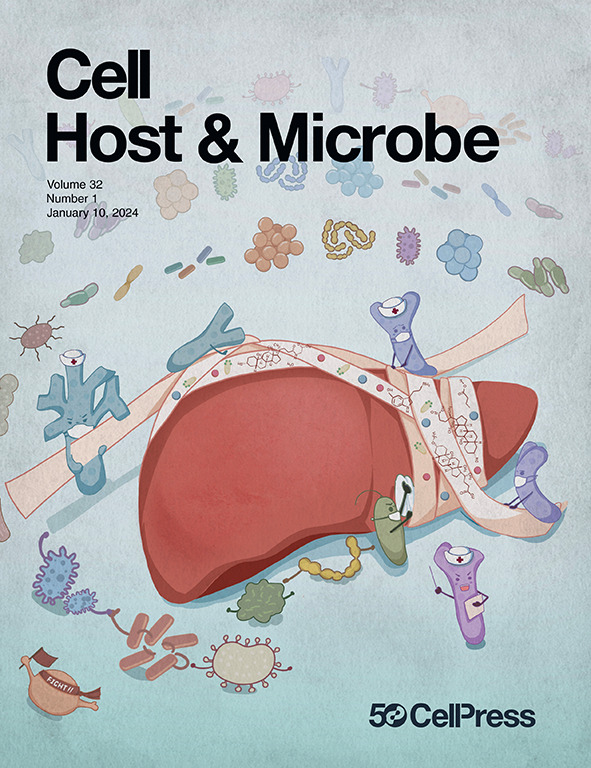A thiouracil desulfurase protects Clostridioides difficile RNA from 4-thiouracil incorporation, providing a competitive advantage in the gut
IF 20.6
1区 医学
Q1 MICROBIOLOGY
引用次数: 0
Abstract
Nucleotides are essential building blocks for major cellular macromolecules and are critical for life. Consequently, bacterial pathogens must acquire or synthesize nucleotides during infection. Clostridioides difficile is the most common hospital-acquired gastrointestinal infection, and nutrient acquisition is critical for pathogenesis. However, the impact of nucleotide metabolism on C. difficile infection remains unclear. Here, we discover that 4-thiouracil (4-TU), a pyrimidine analog present in the human gut, is toxic to commensal bacteria. 4-TU hijacks the uracil salvage pathway for incorporation into RNA through the uracil phosphoribosyltransferase activity encoded by PyrR and Upp. C. difficile can salvage 4-TU as a pyrimidine source through the enzymatic action of a thiouracil desulfurase (TudS), thereby contributing to C. difficile fitness in mice fed 4-TU or MiniBioreactor models of infection containing exogenous 4-TU. Collectively, these results reveal a molecular mechanism for C. difficile to utilize a poisonous pyrimidine analog in the vertebrate gut to outcompete commensal microbes.

求助全文
约1分钟内获得全文
求助全文
来源期刊

Cell host & microbe
生物-微生物学
CiteScore
45.10
自引率
1.70%
发文量
201
审稿时长
4-8 weeks
期刊介绍:
Cell Host & Microbe is a scientific journal that was launched in March 2007. The journal aims to provide a platform for scientists to exchange ideas and concepts related to the study of microbes and their interaction with host organisms at a molecular, cellular, and immune level. It publishes novel findings on a wide range of microorganisms including bacteria, fungi, parasites, and viruses. The journal focuses on the interface between the microbe and its host, whether the host is a vertebrate, invertebrate, or plant, and whether the microbe is pathogenic, non-pathogenic, or commensal. The integrated study of microbes and their interactions with each other, their host, and the cellular environment they inhabit is a unifying theme of the journal. The published work in Cell Host & Microbe is expected to be of exceptional significance within its field and also of interest to researchers in other areas. In addition to primary research articles, the journal features expert analysis, commentary, and reviews on current topics of interest in the field.
 求助内容:
求助内容: 应助结果提醒方式:
应助结果提醒方式:


